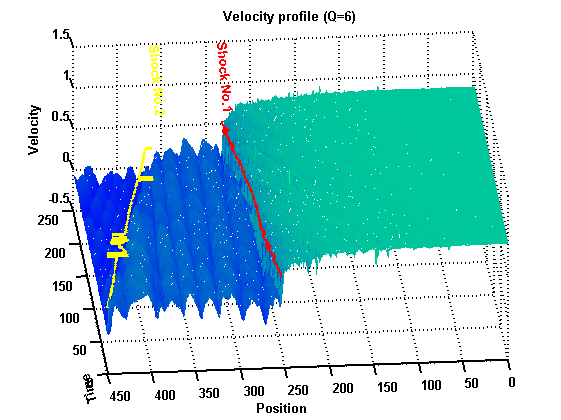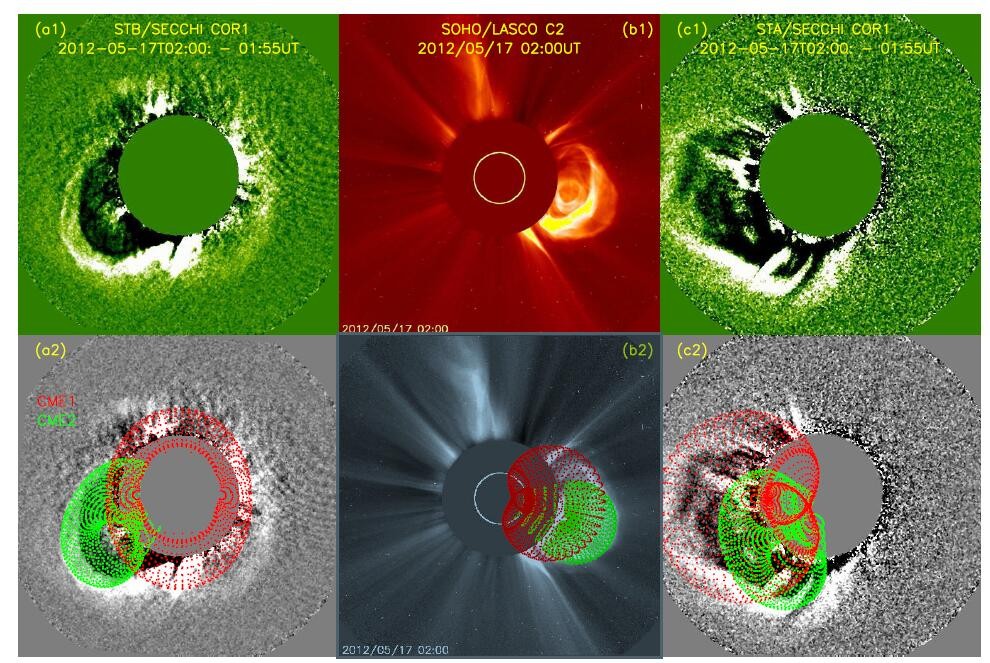Solar Eruption is the origin of the Solar Energetic Particles, and it is also the basic impact factor of the solar-terrestrial environment and the space weather. Coronal Mass Ejections (CME) driven-shock is considered to be the important site for particles acceleration in the interplanetary space, making the CME driven-shock the vital technique for researching the solar energetic particles acceleration and energy transportation.
Dr. WANG Xin, who serves as an Associate Researcher in Xinjiang Astronomical Observatory (XAO), and his coauthors proposed twin shock model which based on the observations of the twin CME. By applying the dynamical Monte Carlo method to simulate the processes of the pileup collisions of the twin shock, the researchers found that the proton energy spectrum shows an "ankle-like" property, when the posterior shock catches up to the preceding shock. The "ankle-like" point is located at the energy about 2.0 MeV. At the energy range below 2.0 MeV, the energy spectrum shows a soft slope; but at the energy range above 2.0 MeV, the energy spectrum becomes a hard slope inversely. The researchers consider that the formation of the "ankle-like" structure would have been contributed by such processes. The particles accelerated by the preceding shock will receive the re-acceleration by the posterior shock, and the subsequent shock should have more effect on the higher energy particles, which have accelerated by the proceeding shock. So the energy spectrum becomes an "ankle-like" shape when the energetic particles undergo the posterior shock re-acceleration.
This research has verified the pileup effect of the twin shock, which lead to the "ankle-like" shape on the energy spectrum, via the Monte Carlo Method. This effect would be helpful to understand the subtle structure of the energy spectrum and the dispassion processes of the accelerated energetic particles. This result would also provide a new understanding for the puzzle of the energy spectral "ankle" on the cosmic ray spectrum. The related research results have been published in APJ (885,66).
This work has been supported by the Xinjiang Natural Science Foundation No. 2019D01A100, and China Scholarship Council (CSC).
Publication link:https://doi.org/10.3847/1538-4357/ab4655

Figure 1. The simulated energy spectrum of the particles. The red curve shows a "ankle-like" point at the energy about 2.0 MeV. At the energy range below the 2.0 MeV, the energy spectral index is γ2 = -2.69±0.11; at the energy range above the 2.0 MeV, the energy spectral index is γ3 = -1.79±0.05.

Figure 2. The simulated twin shock pileup collision processes. The red line represents the CME1-driven shock; the yellow line represents the CME2-driven shock.

Figure 3. a1, b1, and c1 represent STEREO-B,SOHO,and STEREO-A observations for the twin CME event on 2015,May,17th, respectively (ApJ, Shen, et. al, 2013).